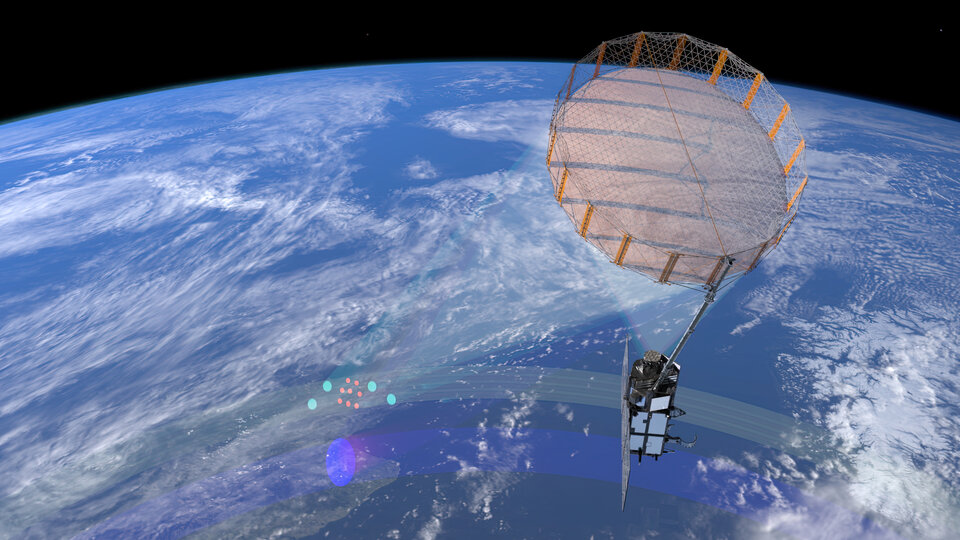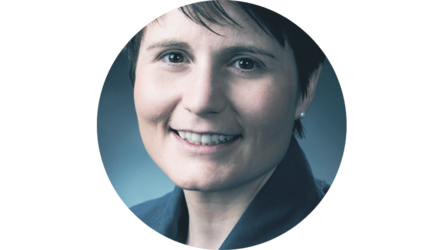1975 to Today: TDE Antenna Developments
The European Space Agency has a long and proud tradition of advancing satellite antenna technology—one marked by continuous progress toward ever-higher frequency ranges and ever-greater performance. A key part of this journey has been the work carried out under TDE activities, which have led to the pre-qualification of many antenna designs, allowing them to be used in orbit with short lead times, for both ESA’s own and commercial missions. These initiatives have allowed European companies to compete successfully on the international market by offering appropriate antenna subsystems quickly and at competitive prices. This has not only supported ESA’s own scientific and exploratory goals, but also strengthened the competitiveness of European industry in the global market.
Over the decades, TDE-backed innovation has led to several significant breakthroughs in antenna developments. ESA has been at the forefront of developing shaped reflector antennas, pioneering both the software design methods and manufacturing techniques required. This work culminated in the adoption of shaped gridded reflectors for the next generation of Eutelsat broadcasting satellites—an achievement that underscores Europe’s leadership in commercial communications. Similarly, the development of C-band feeds and beam-forming networks through TDE activities enabled Daimler Benz Aerospace to become the first European supplier of large hemi-beam antennas.
TDE antennas onboard ESA missions

In deep space, ESA’s investment in frequency-sensitive subreflector technologies paid dividends when Alenia Spazio (now part of Thales Alenia Space) was selected to deliver the High-Gain Antenna for NASA’s ambitious Cassini mission to Saturn—marking a high point in European-American cooperation and technical credibility. The need for large antennas was highlighted back in the 1970’s. Most recently, the BIOMASS mission, which launched in 2025, highlighted a gap in the European market for these mechanically complex structures. When BIOMASS’s multi-metre deployable reflector antenna couldn’t be sourced in Europe, TDE began a series of activities to incrementally develop this type of large deployable structure to make these missions possible in the future. One of these, called AMPER (Advanced techniques for mesh reflector with improved radiation pattern performance), has resulted in an 8-9 metre wide mesh antenna that is now part of the European Large Deployable Reflector study (see box on the right). The reflector has a double pantograph design to form a deployable ring. Once deployed (which takes around seven minutes) it tensions two opposing but connected parabolic nets, one on the top and one on the bottom. The top netting supports and maintains a very finely knitted metallic mesh in a predefined shape, that will eventually reflect the radio signal
Monolithic to miniature - antennas of all shapes and sizes

At the other end of the scale, in 2024 TDE completed an activity to develop a miniaturised antenna that can support probes landing on distant planets. After Beagle 2 failed, the inquiry commission recommended that future planetary entry missions should include communications on critical performance measurements and spacecraft health status, especially during mission critical phases such as landing. The Entry Descent and Landing (EDL) phase is a very specific scenario for communications limited by several constraints such as exposure to high temperatures or the angle of the Earth, which affects signal coverage. The TDE developed antenna has already been tested on a mock probe. These accomplishments are just a few highlights from a broader portfolio of antenna advancements driven by ESA’s commitment to long-term innovation. By supporting the early development and qualification of key subsystems, ESA ensures that Europe remains a strong and agile player in the space sector, capable of responding quickly to new mission needs and market opportunities
CIMR Mission

TDE has been working with Large Space Structures to develop Europe’s first shaped mesh reflector antenna. The antenna will optimise satellite-based communications and observations as the surface can be shaped to improve performance, filling a technological gap for Europe first identified in the early stages of the Biomass mission. An impact study has shown that the AMPER antenna project has strengthened the supply chain, generated competitiveness and enhanced European non-dependence and leadership. AMPER is now part of the European Large Deployable Reflector study. The European Large Deployable Reflector study has taken several developments from AMPER and other TDE activities to develop a large deployable antenna that will now be used onboard the Copernicus Imaging Microwave Radiometer (CIMR) mission, planned for launch in 2029.
The FIRST antenna reflector

The Far-InfraRed and Submillimetre Telescope (FIRST) was selected as Cornerstone 4 in ESA’s Horizon 2000 long-term science plan by the Science Programme Committee in November 1993. It was envisaged as an astronomical observatory for spectroscopy, imaging and photometry, operating in the 0.1 to 1.0 mm spectral wavelength range and required a breakthrough technology of a 3 m-diameter antenna reflector with a surface shape accuracy better than 5 microns at an operating temperature of 110 K. For the mission, a 1.1 m prototype reflector was developed within the TDE when it was still the TRP, and the reflector’s accuracy, thermal-stability and mass requirements were all demonstrated fully. It applied special low-temperature-curing CFRP in the reflector face sheets and core. The technology, developed with Daimler Benz Aerospace, outperformed its worldwide competitors and was proposed as the baseline technology for FIRST but ultimately did not meet the mission requirements. However, it fully complied with the mission requirements for Planck and was chosen for use onboard. Planck, Europe’s first mission to study the Cosmic Microwave Background, was successfully launched on 14 May 2009 alongside the Herschel Space Observatory.















 Germany
Germany
 Austria
Austria
 Belgium
Belgium
 Denmark
Denmark
 Spain
Spain
 Estonia
Estonia
 Finland
Finland
 France
France
 Greece
Greece
 Hungary
Hungary
 Ireland
Ireland
 Italy
Italy
 Luxembourg
Luxembourg
 Norway
Norway
 The Netherlands
The Netherlands
 Poland
Poland
 Portugal
Portugal
 Czechia
Czechia
 Romania
Romania
 United Kingdom
United Kingdom
 Slovenia
Slovenia
 Sweden
Sweden
 Switzerland
Switzerland


























